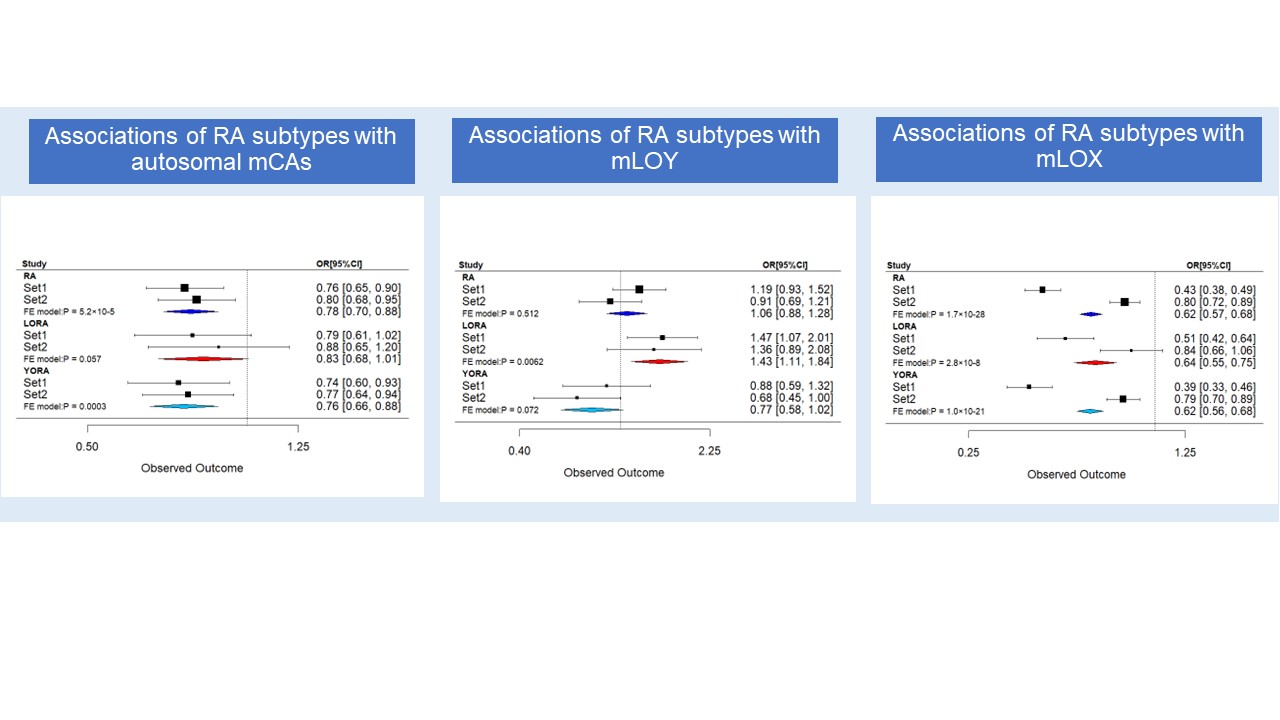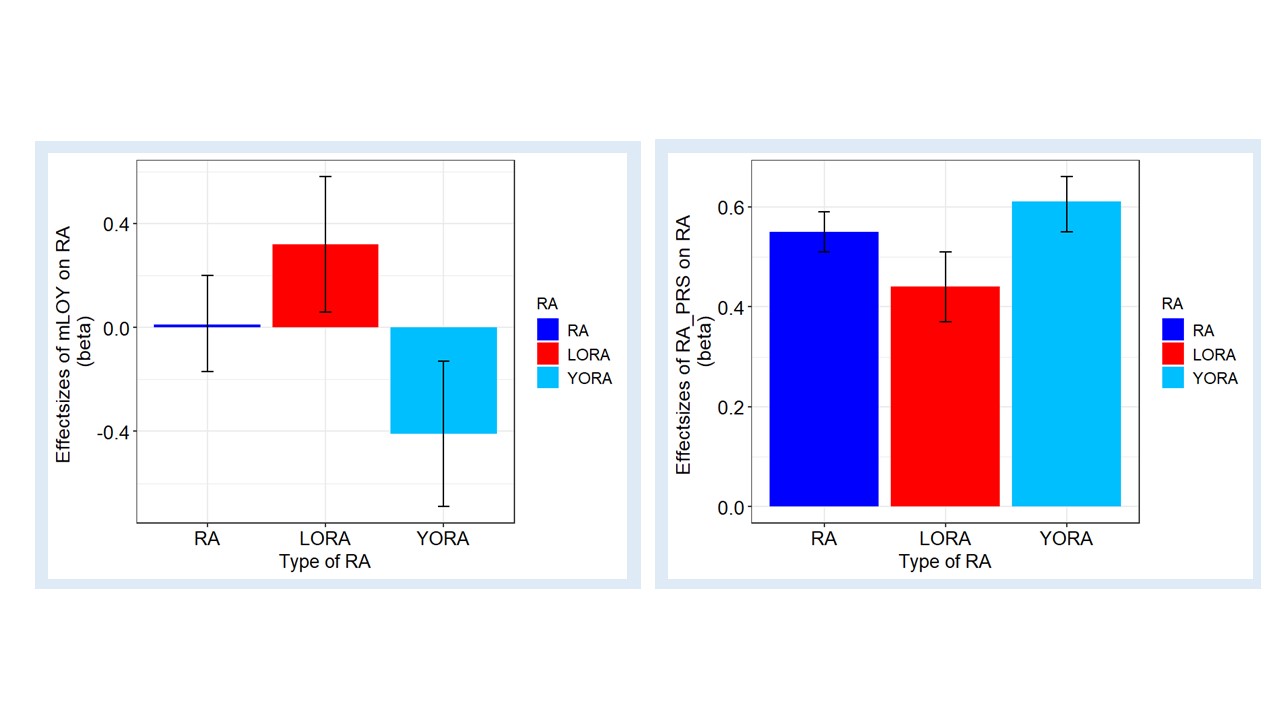Session Information
Session Type: Poster Session B
Session Time: 10:30AM-12:30PM
Background/Purpose: The age of onset of rheumatoid arthritis (RA) is becoming older worldwide. Since patients with late-onset RA (LORA) have unique clinical characteristics, including acute onset and lower prevalence of seropositivity, genetic and environmental risks may differ with the age at disease development. Recently, it has been shown that mosaic chromosomal alterations (mCAs) accumulate with age and lead to clonal expansion of dysregulated autoimmune cells. This study was conducted to evaluate the potential roles of mCAs in RA susceptibility using two independent cohorts.
Methods: mCAs in peripheral blood samples from two cohorts (Set_1: 2,107 RA cases and 86,998 controls, Set_2: 2,359 RA cases and 86,998 controls) were detected by the Mosaic Chromosomal Alterations (MoChA) pipeline. LORA was defined as RA with its onset older than 60 years, while patients who developed RA at the age between 16 and 60 were defined as young-onset RA (YORA). We evaluated the associations of mCAs with RA or RA subsets (LORA, YORA) using the logistic regression models in each dataset, followed by meta-analysis with the inverse-variance-weighted fixed-effect model. The effect sizes of mosaic loss of Y (mLOY) and polygenic risk score (PRS) of RA were also determined in each dataset, and subsequent meta-analysis was conducted. We then stratified RA patients and controls into 6 subgroups based on the mLOY status and PRS, and evaluated the risks of LORA and YORA in each subgroup using the logistic regression models.
Results: Set_1 included 608 patients with LORA and 1,499 with YORA, and Set_2 included 400 with LORA and 1,959 with YORA, respectively. As shown in Figure 1, mLOY was significantly increased in LORA by age-adjusted logistic regression model (odds ratio [OR]=1.43, P=0.0062 by meta-analysis), while mLOY was negatively associated with YORA (OR=0.77, P=0.072 by meta-analysis). On the other hand, we found consistently negative associations of autosomal mCAs or mosaic loss of X (mLOX) with RA all combined, LORA, and YORA. The observed opposite direction of mLOY associations between LORA and YORA was also evident in the effect sizes (beta=0.32, P=0.017, and beta=-0.41, P=0.0047, respectively) (Figure 2, left). Intriguingly, the effect sizes of PRS were lower in LORA than in YORA (Figure 2, right), indicating different genetic architectures between LORA and YORA. When subjects were classified based on PRS and mLOY status, we observed a nearly linear increase of ORs for LORA with a further increase of OR among subjects with high PRS and cell fraction (CF) of mLOY >5% (Figure 3, upper panel). On the other hand, there was neither linear increase nor CF-dependent increase of ORs in the YORA subset (Figure 3, lower panel), highlighting a different impact of CF of mLOY between LORA and YORA.
Conclusion: mLOY confers the acquired disease risk in different manners between LORA and YORA, which might reflect different gene-environment interactions and the effects on disease development. The different impact of PRS also highlights different inherent genetic architectures between LORA and YORA. Taken together, our findings suggest distinct underlying pathophysiological mechanisms between these subsets of RA.
To cite this abstract in AMA style:
Uchiyama S, Ishikawa Y, Ikari K, Honda S, Kamatani Y, Gono T, Kuwana M, Terao C. Distinct Impacts of Mosaic Loss of Chromosome Y and Genetic Risk on the Age of Onset in Patients with Rheumatoid Arthritis [abstract]. Arthritis Rheumatol. 2024; 76 (suppl 9). https://acrabstracts.org/abstract/distinct-impacts-of-mosaic-loss-of-chromosome-y-and-genetic-risk-on-the-age-of-onset-in-patients-with-rheumatoid-arthritis/. Accessed .« Back to ACR Convergence 2024
ACR Meeting Abstracts - https://acrabstracts.org/abstract/distinct-impacts-of-mosaic-loss-of-chromosome-y-and-genetic-risk-on-the-age-of-onset-in-patients-with-rheumatoid-arthritis/



